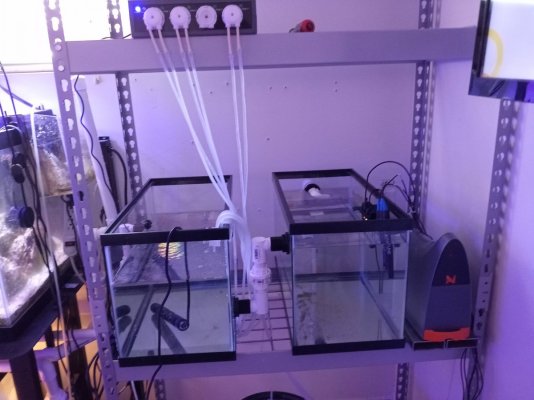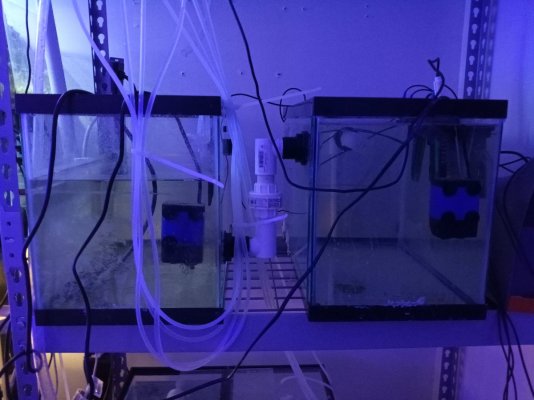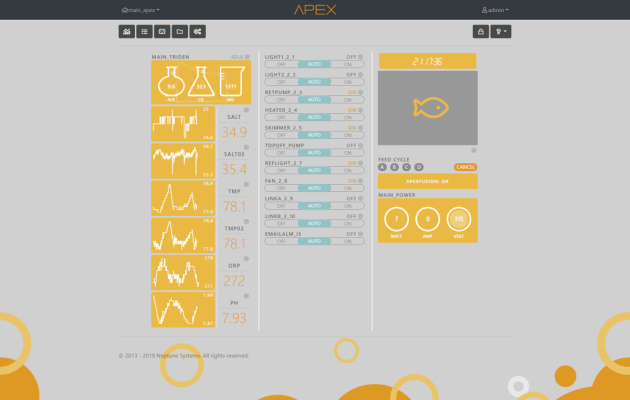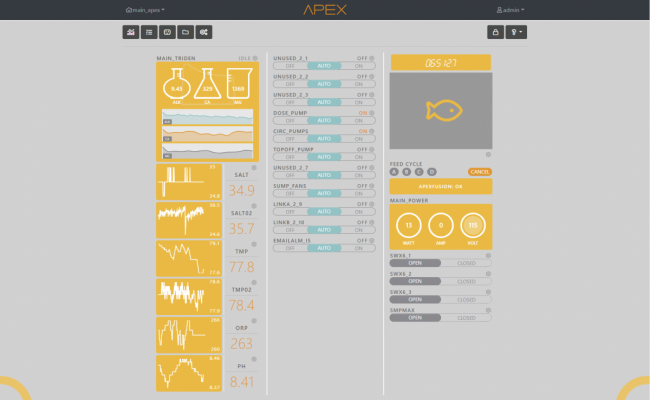I've added a couple 10 gallon tanks plumbed on my return manifold for a new probe and testing tank and a dosing tank. I currently have 3 of my 4 display tanks connected to this main system. I have two other tanks that are cycleing and will have every last thing quarantined before entering that system. This main system will eventually go through QT and be fallowed for 76 days and join the other system, so all the tanks in my office will be in one large system.
Here are the reasons:
1. I'm tired of probes getting dirty with gunk in the sump. I'm adding a pre-filter to the water coming into these tangs to filter large particulates that may be returned from the sump to the systems. This should not effect anything I want to test for in the Trident and Apex probes.
2. These are up on a higher shelf and the probes and Apex Trident can be more easily maintained.
3. I can dose to a controlled environment that I can provide very high mixing flow without possibly effecting readings in the rest of the sump. Now there is still going to be slight spikes as the doses get returned to the tanks, but since the mixing tank gets returned with to the same location as the tank returns it will be fairly UN-substantial.
4. I cleans up a lot of equipment in the sump.
5. It add water volume and aeration to the system.
6. It is my hope to be able to build a redundant top off system based on salinity, not water level. This means multiple salinity probes and lots of Apex programing.
Anyway I will try to keep this tread updated with the progress of this experiment.

Here are the reasons:
1. I'm tired of probes getting dirty with gunk in the sump. I'm adding a pre-filter to the water coming into these tangs to filter large particulates that may be returned from the sump to the systems. This should not effect anything I want to test for in the Trident and Apex probes.
2. These are up on a higher shelf and the probes and Apex Trident can be more easily maintained.
3. I can dose to a controlled environment that I can provide very high mixing flow without possibly effecting readings in the rest of the sump. Now there is still going to be slight spikes as the doses get returned to the tanks, but since the mixing tank gets returned with to the same location as the tank returns it will be fairly UN-substantial.
4. I cleans up a lot of equipment in the sump.
5. It add water volume and aeration to the system.
6. It is my hope to be able to build a redundant top off system based on salinity, not water level. This means multiple salinity probes and lots of Apex programing.
Anyway I will try to keep this tread updated with the progress of this experiment.

Last edited:

















